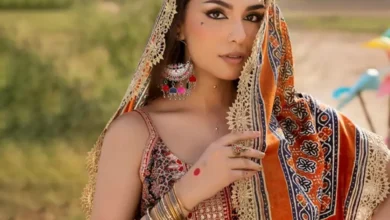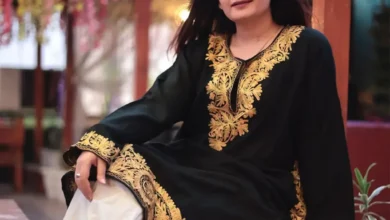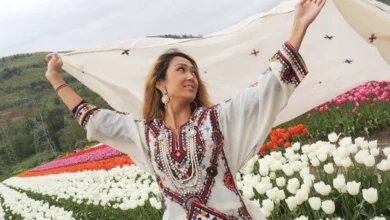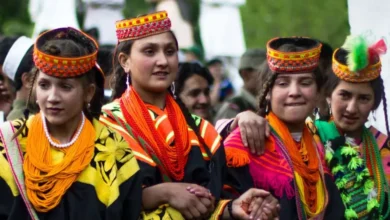Discover the vibrant world of Phulkari embroidery — Punjab’s 500-year-old textile art stitched with love, symbolism, and ancestral wisdom. Explore its history, stitches, meanings, and modern revival.
When Thread Becomes Poetry — The Soul of Phulkari
In the golden fields of Punjab, where wheat sways and folk songs echo, grandmothers once sat under neem trees — needle in hand, silk thread gleaming — stitching blessings into cloth.
They weren’t making “craft.”
They were weaving love letters. Dowry dreams. Family prayers.
See also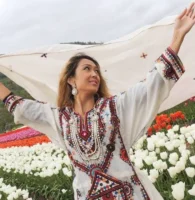 Balochi Embroidery and Tribal Dresses: Patterns of Nomadic Tradition
Balochi Embroidery and Tribal Dresses: Patterns of Nomadic TraditionThis is Phulkari — “flower work” in Punjabi — a dazzling embroidery tradition born in the homes of rural Punjab, passed through generations of women, and now celebrated on global runways.
More than decoration, Phulkari is memory stitched in silk — a living archive of Punjabi identity, resilience, and joy.
Let’s unfold its petals.
🌼 What Is Phulkari? The Blossoming Art of Punjab
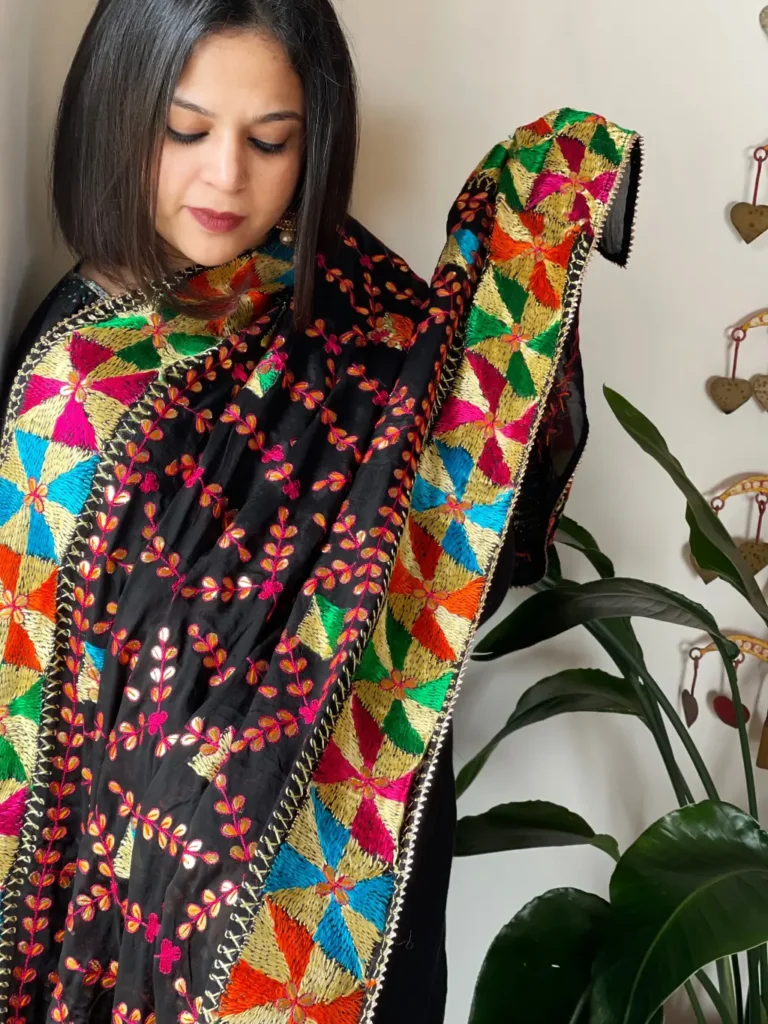
Phulkari (from phul = flower, kari = work) is a traditional form of folk embroidery originating in the Punjab region — now split between India and Pakistan.
See also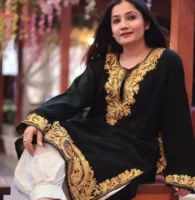 The Kashmiri Pheran: Tradition and Elegance in the Himalayan Region
The Kashmiri Pheran: Tradition and Elegance in the Himalayan RegionUnlike royal or courtly embroideries, Phulkari was made by women, for women — stitched at home, often as part of a girl’s wedding trousseau.
✨ Key Features:
- Base Fabric: Coarse handwoven cotton khaddar (undyed, off-white or red)
- Thread: Untwisted silk floss (called patt), imported from Kashmir or China
- Stitch: Darning stitch — worked from the back of the fabric, creating bold, geometric floral patterns on the front
- Colors: Vibrant reds, oranges, pinks, greens, golds — each hue with meaning
- No Tracing: Designs were never drawn — stitched freehand from memory and imagination
🧵 “The woman didn’t follow a pattern. She followed her heart.”
📜 A Legacy Woven in Time: 500 Years of Phulkari
Phulkari’s roots stretch back to the 15th century, mentioned in Punjabi folklore and the poetic verses of Waris Shah’s Heer Ranjha (18th century).
Historically, every girl in a Punjabi household learned Phulkari — not as a hobby, but as a rite of passage.
- Birth: Grandmothers began stitching a Phulkari for newborn girls
- Puberty: Girls learned to stitch their own — building their wedding trousseau
- Marriage: Dozens of Phulkaris gifted to the bride — symbolizing love, prosperity, protection
- Motherhood & Beyond: Worn during festivals, childbirth, and even used to wrap the deceased
💔 Historical Note: After Partition (1947), many Phulkari artisans were displaced — and the craft nearly vanished. Thankfully, revival efforts are bringing it back to life.
🎨 Types of Phulkari: Not All Flowers Are the Same
Phulkari isn’t one style — it’s a family of embroideries, each with purpose and pattern.
🌺 Bagh (“Garden”)
- Coverage: Fully embroidered — fabric completely hidden under silk
- Occasion: Weddings, special ceremonies
- Symbolism: Abundance, prosperity, the “garden of life”
“A bride wrapped in Bagh isn’t just dressed — she’s blessed.” — Punjabi saying
🌼 Chope
- Design: Minimalist — usually red fabric with yellow/orange embroidery on both ends
- Giver: Stitched by the maternal grandmother, gifted on wedding day
- Meaning: Blessings for fertility, happiness, and protection
🌿 Sainchi Phulkari
- Style: Figurative — depicts scenes of village life: farmers, animals, wells, weddings
- Rare & Narrative: Tells stories — almost like embroidered folk paintings
🌈 Tilpatra / Neelak
- Tilpatra: Scattered floral motifs (like seeds — til)
- Neelak: Blue-dominant — worn for special occasions or by older women
🧵 The Making: A Stitched Meditation
Creating a Phulkari is slow, sacred work — often taking months to years to complete.
The Process:
- Fabric Prep: Khaddar cloth washed, sun-dried, sometimes softened with flour paste
- Thread Selection: Silk floss chosen for color symbolism (see below)
- Stitching: Using only a needle and hoop — no tracing, no machines
- Direction: Always stitched from the reverse — the magic blooms on the front
- Finishing: Edges hemmed, sometimes with mirror work or tassels
🌞 Artisan Wisdom: “You don’t rush Phulkari. You breathe with it. Each stitch is a prayer.”
🎨 Color Symbolism: Every Hue Has a Heart
In Phulkari, color isn’t just pretty — it’s powerful.
| Red | Passion, fertility, marital bliss | Weddings, festivals |
| Orange | Sacrifice, courage, energy | Baisakhi, celebrations |
| Yellow | Prosperity, new beginnings | Spring, childbirth |
| Green | Nature, harmony, healing | Daily wear, recovery |
| Blue | Calm, depth, spirituality | Older women, rainy season |
| White | Purity, mourning, peace | Funerals, widowhood (historically) |
| Gold | Wealth, divine light, celebration | Weddings, religious events |
👗 Phulkari in Traditional Attire: More Than a Dupatta
While Phulkari is most famously seen as a dupatta (head covering/scarf), it’s also stitched onto:
- Kurtas and kurtis — for festive wear
- Ghagras (skirts) — especially in Bagh style
- Juttis (shoes) — embroidered with miniature motifs
- Cushions, wall hangings, torans (door hangings) — for home décor
In traditional weddings, a bride might wear:
→ A red choli (blouse)
→ A lehenga skirt with Phulkari border
→ And a full Bagh Phulkari dupatta draped over her head — shimmering like a garden in silk
🔄 Modern Revival: From Villages to Vogue
Once fading into memory, Phulkari is now enjoying a global renaissance — worn by celebrities, showcased in museums, and reimagined by designers.
👗 Fashion Fusion
- Manish Malhotra, Sabyasachi, Ritu Kumar — featuring Phulkari in bridal lehengas and capes
- International Runways — Phulkari motifs on gowns, jackets, even denim
- Bollywood & Bhangra — Priyanka Chopra, Deepika Padukone, and Diljit Dosanjh rocking Phulkari on screen and stage
🛍️ Everyday Wear
- Phulkari-print masks, tote bags, laptop sleeves
- Fusion kurtas with Phulkari yoke or sleeves
- Contemporary dupattas paired with jeans or dresses
🏛️ Preservation Efforts
- UNESCO recognizing Phulkari as Intangible Cultural Heritage (pending)
- NGOs & Cooperatives training rural women in Patiala, Amritsar, Ludhiana
- Government Schemes like “Crafts Village” and “Handloom Mark” certifying authentic pieces
💬 “We’re not just saving thread — we’re saving stories.” — Phulkari artisan, Patiala
🌱 Challenges: Can Tradition Survive in a Fast World?
Despite its revival, Phulkari faces threats:
- ⚠️ Machine-made imitations — flooding markets, undercutting artisans
- ⚠️ Declining interest among youth — seen as “old-fashioned” or “too slow”
- ⚠️ Loss of natural dyes & silk floss — replaced by cheaper synthetics
✅ How You Can Help
- Buy hand-embroidered Phulkari from artisan cooperatives (not mass retailers)
- Support fair-trade brands like Gaatha, Punjabiyat, Dastkar
- Visit craft villages — meet the makers, learn the stitches
- Share the story — online, in classrooms, at cultural events
🖌️ “Don’t just wear Phulkari. Know its hands. Honor its history. Pass it on.”
Quick Reference: Phulkari at a Glance
| Origin | Punjab region (India & Pakistan) |
| Meaning | “Flower work” — embroidery of blessings |
| Base Fabric | Handwoven khaddar (cotton) |
| Thread | Untwisted silk floss (patt) |
| Stitch | Darning stitch (from the back) |
| Time to Make | 3 months – 2 years (depending on type) |
| Key Types | Bagh, Chope, Sainchi, Tilpatra |
| Modern Use | Bridal wear, fashion, home décor, accessories |
FAQs: Phulkari Embroidery
❓ Is Phulkari only for weddings?
No! While traditionally part of bridal trousseaus, Phulkari is now worn at festivals, cultural events, and even as everyday fashion.
❓ Can men wear Phulkari?
Traditionally, it was worn by women — but today, designers are creating Phulkari jackets, stoles, and turbans for men too.
❓ How can I tell if a Phulkari is authentic?
Look for:
→ Hand-stitched (not machine-printed)
→ Silk floss on khaddar fabric
→ Irregularities (perfect symmetry = likely machine-made)
→ Certificate from Handloom Mark or artisan cooperative
❓ What’s the difference between Phulkari and Bagh?
Phulkari = scattered floral motifs (fabric visible)
Bagh = fully covered embroidery (fabric hidden) — like a blooming garden
Conclusion: Stitched With Love, Worn With Pride
Phulkari is not embroidery.
It’s ancestral memory.
It’s women’s wisdom.
It’s Punjab’s heartbeat in silk and thread.
Every stitch holds a story.
Every color sings a song.
Every pattern — a prayer for joy, for harvest, for love.
In a world of fast fashion and fleeting trends, Phulkari reminds us:
Some things are meant to be slow.
Some things are meant to be shared.
Some things — like love, like heritage, like art — are meant to be stitched…
…not just worn.
So next time you drape a Phulkari over your shoulders — feel its weight.
Not of fabric.
But of generations.
Of laughter under neem trees.
Of grandmothers whispering blessings into every bloom.
That’s not fashion.
That’s legacy.
And it’s still blooming.
🌸🧵🇵🇰🇮🇳

